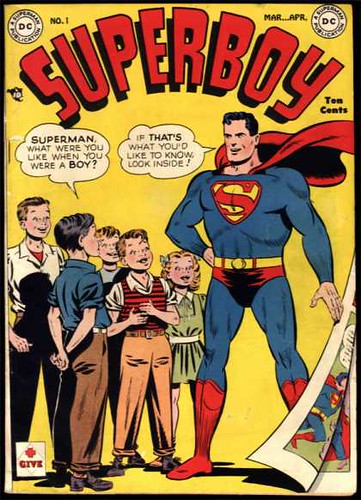 io9 has a nice look at the history of comic-book intellectual-property law through the lens of Superman-related lawsuits. The most interesting, for me, remains the legal tussling over Superboy:
io9 has a nice look at the history of comic-book intellectual-property law through the lens of Superman-related lawsuits. The most interesting, for me, remains the legal tussling over Superboy:
Superman creator Jerry Siegel submitted a proposal to DC Comics for a series of adventures about Clark Kent’s youth. DC rejected the proposal, but later printed Superboy while Siegel was serving in the US Army. When Siegel’s heirs attempted to terminate Superboy’s copyright, DC and Time Warner claimed that Superboy was merely Superman as a young man, and not a distinct character (and thus not copyrightable as distinct from Superman), giving DC the legal right to publish books featuring Superboy with or without Siegel’s permission.It must be the narrativist in me who just can't understand how Superboy can be a distinct entity from Superman: the whole premise for Superboy is that he's Superman as a boy.
Superboy’s Story: The original Superboy follows the adventures of the young Superman growing up in Smallville. He wears glasses as his alter ego Clark Kent and the iconic suit as Superman. Like his grownup self, he has superpowers and battles Lex Luthor, and he eventually travels to the 30th century to join the Legion of Super-Heroes.
Outcome: In 1948, a referee in a dispute between Siegel and DC found that Superboy was a distinct entity from Superman, and that DC had published the comic illegally. The findings were vacated in a settlement between DC and Siegel, but in 2006, the Ninth Circuit agreed with the referee, granting termination rights to Siegel’s heirs. However, the court later vacated that ruling, granting Warner and DC’s motion for reconsideration. Although Siegel’s family has recaptured some rights to Superman, the Superboy question remains undecided.






|